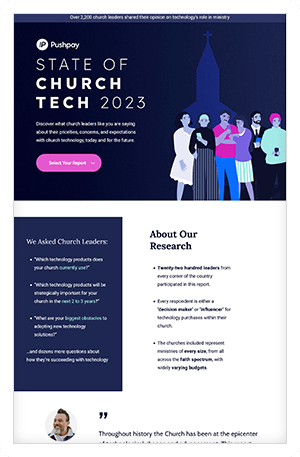Despite its mostly unearned reputation for not changing with the times, the Church has always embraced and leveraged the latest technologies to fuel its mission.
Whether individual leaders believe the broad ongoing shift to hybrid worship and engagement is a positive or a negative, digital church is inarguably here to stay. However, whether the metaverse will play a large role in that hybrid future remains opaque.
But if a shift to the metaverse does happen, Pushpay will be ready.
Already our team is tracking and experimenting with features that could become cornerstones of VR church in the future. We’re actively collaborating with the experts who are at the cutting edge of this new technology; we recently hosted a two-day event with leaders from all over the country to explore the wants, needs, and possibilities of a metaverse church—and even debated what that future may look like.
For example, churches might dip their toe into the metaverse by holding traditional services in a virtual model of their existing building. But the potential exists to go so much further, to create a unique, powerful, and immersive experience by hosting VR worship directly from, say, a digital Garden of Gasthemene. And who’s to say esports in the metaverse won’t become a driver for ministries, in ways we can’t yet imagine, as the concept of “church” evolves alongside technological innovation?
Just as the world couldn’t know where the iPhone would take us in 2007, nor how the COVID pandemic would radically reshape the Church’s relationship with technology, it’s impossible to confidently forecast how an emerging metaverse might mold what we define as “church” in the future.
Which is exactly why Pushpay innovates. We’re exploring the potential of the metaverse because, if the day comes when your church decides to adopt VR as an option for building faith, connection, and belonging in your community—in whatever form the metaverse eventually takes—we want to confidently provide well-founded guidance and the best-in-class tools you’ll need to make that vision a reality.
TOUR THE GIVING PLATFORM







